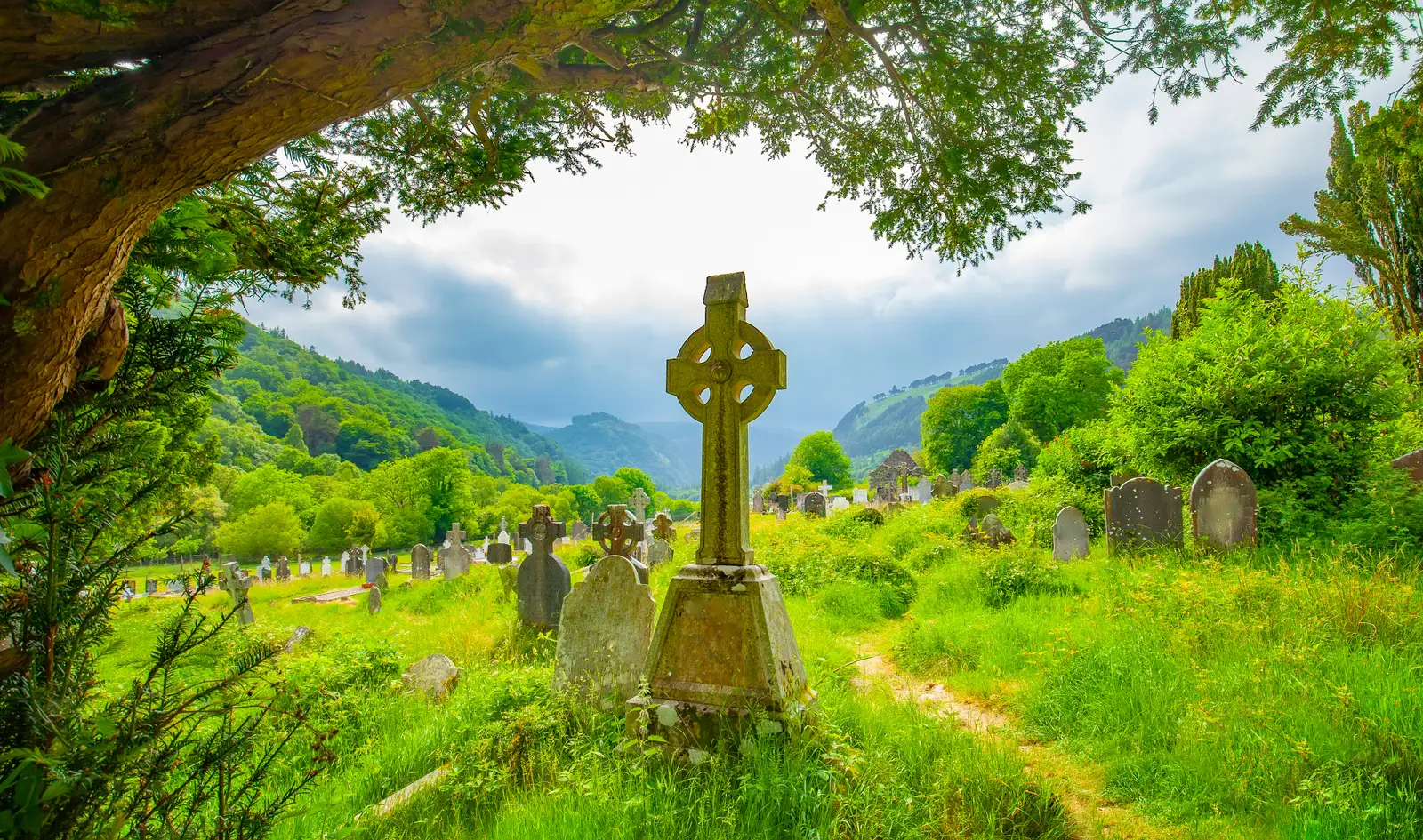The Celtic Cross: A Timeless Symbol of Heritage and Spirituality
Explore the Celtic Cross, a symbol steeped in history and spirituality. Unravel its mysterious origins, rich symbolism, and lasting legacy as we journey through the ancient and modern worlds.

Introduction: Unraveling the Mysteries of the Celtic Cross
The Celtic Cross, a symbol steeped in history, heritage, and spiritual significance, has captivated the hearts and minds of millions around the world. This ancient emblem has stood the test of time, maintaining its allure and mystique throughout the centuries. In this blog post, we will delve into the origins, meaning, and cultural impact of the Celtic Cross, shedding light on this enigmatic icon.
The Origins of the Celtic Cross – An Intersection of Cultures
The origins of the Celtic Cross are shrouded in mystery, with various theories suggesting different points in history as its genesis. Some believe that the cross predates Christianity, originating in pre-Christian Celtic or Pagan societies as a symbol of the sun or the four elements.
Others argue that the Celtic Cross emerged as a distinct symbol in the early days of Christianity in the British Isles, particularly in Ireland. It is said that Saint Patrick, the patron saint of Ireland, combined the Christian cross with the circle, representing the Celtic sun god, to create the Celtic Cross as a way of converting the pagan population. This theory highlights the Celtic Cross as a harmonious fusion of the region's pagan and Christian traditions.

Embossed Celtic High Cross
Unveiling the Symbolism of the Celtic Cross
The Celtic Cross carries a wealth of symbolism, drawing on both Christian and pre-Christian interpretations. Here are a few of the most common meanings associated with this potent symbol:
Christian Symbolism: As a prominent Christian emblem, the Celtic Cross represents the sacrifice of Jesus Christ on the cross for the salvation of humanity. The circle, which intersects the cross's arms, is often seen as a symbol of eternity or God's unending love.
Pagan Roots: For those who trace the Celtic Cross back to pre-Christian origins, the circle may represent the sun, embodying life, light, and warmth. In this context, the Celtic Cross can be seen as a symbol of the cycle of life, death, and rebirth.
The Four Elements: The Celtic Cross's four arms are sometimes associated with the four elements of Earth, Air, Fire, and Water, emphasizing the interconnectedness of all things in the natural world.
Spiritual Navigation: The Celtic Cross has also been interpreted as a compass, guiding the spiritual journey of the believer. In this sense, the cross represents the quest for balance and harmony in one's life.
The Celtic Cross in Art and Architecture
The beauty and mystique of the Celtic Cross have inspired countless artists and craftsmen throughout history. One of the most famous examples of the Celtic Cross in art can be found in the form of the ancient Irish High Crosses. These monumental stone crosses, dating back to the 8th century, are adorned with intricate carvings depicting biblical scenes and Celtic knotwork designs. Some of the most notable High Crosses include the Muiredach's High Cross at Monasterboice and the Cross of the Scriptures at Clonmacnoise.

Muiredach's Cross, Monasterboice, County Louth, Ireland
Celtic Cross designs also feature prominently in various forms of art, from illuminated manuscripts like the Book of Kells to contemporary jewelry, tattoos, and home décor. This enduring symbol's versatility and adaptability continue to captivate the imagination of artisans and admirers alike.

Celtic national ornament in the shape of a cross
A Lasting Legacy: The Celtic Cross Today
Today, the Celtic Cross remains a potent symbol of faith, heritage, and identity for millions of people worldwide, particularly those of Irish, Scottish, and Welsh descent. The cross's unique blend of Christian and pre-Christian symbolism ensures its continued relevance and appeal in a modern, multicultural world.
As we reflect on the rich history and profound meaning of the Celtic Cross, we are reminded of the importance of embracing our cultural roots while also appreciating the interconnectedness of all spiritual traditions. The Celtic Cross serves as a testament to the resilience of the human spirit and our innate desire for harmony and balance in our lives.
The Celtic Cross in Contemporary Spirituality
In contemporary spirituality, the Celtic Cross has transcended its historical context, making its way into the hearts and practices of those who resonate with its symbolism, regardless of their cultural background. As a universal emblem, it continues to inspire spiritual seekers on their journey towards self-discovery and enlightenment.
Many people are drawn to the Celtic Cross for its representation of the union between the material and the spiritual, the eternal and the temporal. This holistic approach to spirituality reflects the growing interest in interfaith dialogue and the merging of different belief systems in the modern world.
Conclusion: The Timeless Appeal of the Celtic Cross
The Celtic Cross, a symbol with deep historical and spiritual significance, continues to captivate and inspire people from all walks of life. As we unravel its mysteries and appreciate its symbolism, we are reminded of the importance of embracing our unique cultural heritage while recognizing the interconnectedness of all human experiences.
From ancient stone monuments to modern tattoos and jewelry, the Celtic Cross remains a timeless symbol of faith, unity, and the human spirit. May it continue to guide and inspire us as we navigate the complex tapestry of life, always seeking balance, harmony, and a deeper understanding of the world around us.